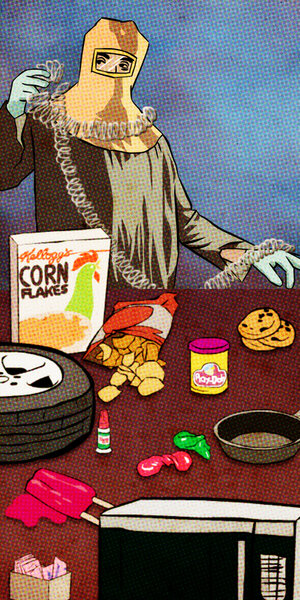Steel has been forged for millennia, with the earliest known examples reaching back to Turkey in the 18th century BC.
Steel, which is iron with a small amount of carbon added to it, offers some advantages over iron in terms of hardness, ductility, and tensile strength, but, because it's still mostly iron, it rusts. Everything made out of steel will, over time, inexorably transform into a crumbling powder.
Throughout the ages, metallurgists attempted to add other elements to steel to prevent rusting, sometimes with modest success. But there was no reliable way of mass-producing rustproof steel until 1912, when a metallurgist named Harry Brearly from the English city of Sheffield tried to come up with a better gun.
Most gun barrels are grooved – or "rifled" – in a spiral pattern that causes the bullet to spin, increasing accuracy. But the friction between the bullet and the barrel causes wear, eventually making the barrel too big for the bullet. Brearly sought to develop a steel alloy that would resist erosion.
He failed. Again and again. And his heap of steel scraps grew bigger and bigger.
After several months of trying and failing, Brearly noticed that one of his failures had retained its luster, while the others had rusted.
The sample contained about 12 percent chromium, which had reacted with the oxygen in the air to form a thin, protective film. Even when it was scratched, the film would quickly restore itself. Brearly called his invention "rustless steel."
Since the 16th century, Brearly's hometown of Sheffield was known for manufacturing cutlery, and Brearly immediately saw the potential for his new invention. Up until then, most cutlery was made of ordinary steel, which had to be polished frequently to avoid rusting, or silver, which was prohibitively expensive for many people.
Brearly approached his old schoolmate Ernest Stuart, who was a manager at Mosley's Portland Works. After testing Brearly's material in a vinegar solution, he dubbed it "stainless steel," and the name stuck.
The Portland Works building still stands in Sheffield, where it serves as a low-cost space for independent cutlery makers and metallurgists, along with many artists and musicians. Activists in Sheffield are working to prevent the space from being converted into an apartment complex.





